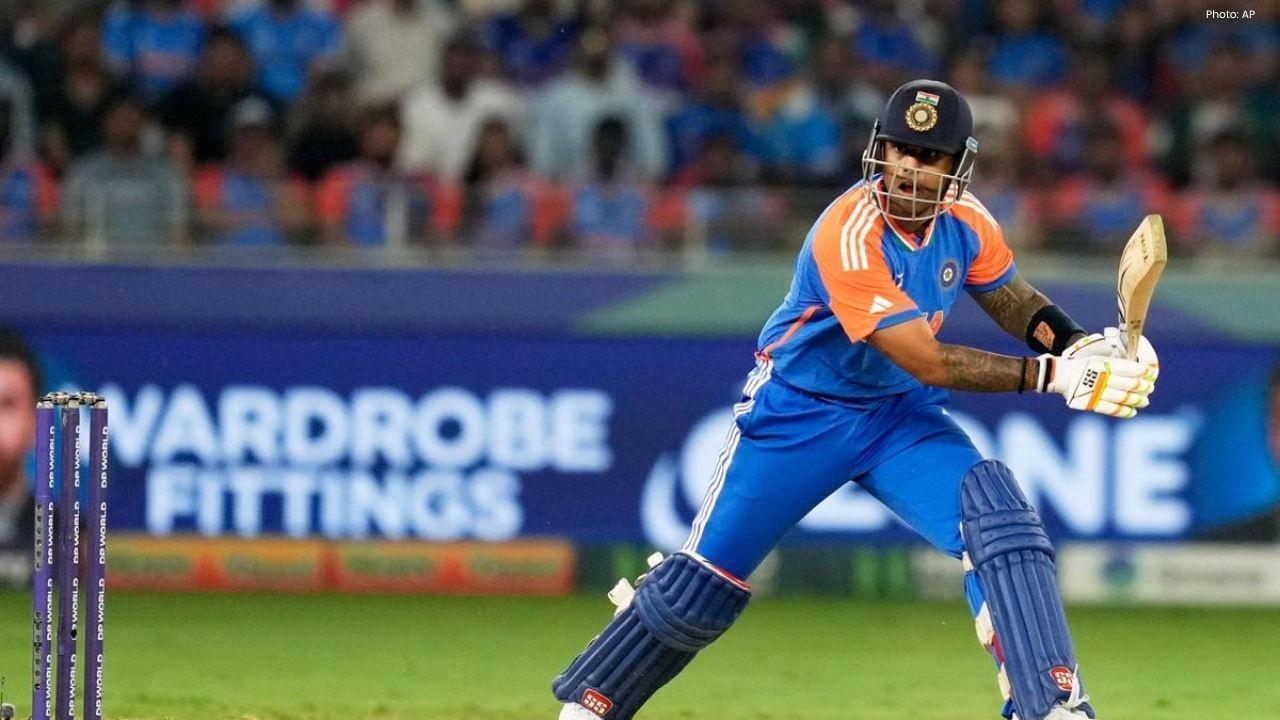
Join 10k+ people to get notified about new posts, news and tips.
Do not worry we don't spam!
Post by : Anis Farhan
Wearable devices have undergone a remarkable transformation in recent years. Initially designed to track basic physical activity like steps, calories, and sleep, modern wearables have become integral tools in personal healthcare. These devices now provide continuous heart rate monitoring, electrocardiogram (ECG) readings, blood oxygen levels, and even the ability to detect early signs of health conditions. Advances in sensor technology, artificial intelligence, and regulatory approval processes have made it possible for wearables to achieve medical-grade accuracy, establishing them as vital tools for health management.
The evolution of wearables signifies a shift in how individuals engage with their health. People can now monitor their physical well-being in real time, identify potential risks early, and make informed lifestyle decisions. This shift also impacts healthcare providers, as wearable data allows for remote monitoring, improved chronic disease management, and enhanced patient care.
The first generation of wearables focused mainly on fitness. Devices tracked steps, calories burned, and sleep patterns, offering users basic insights into their daily activity. Fitness trackers encouraged a more active lifestyle and helped users set goals to improve overall wellness. While their data was largely limited to physical activity, these early devices laid the foundation for more advanced health monitoring.
As technology progressed, wearables incorporated sophisticated sensors capable of monitoring a wider range of health metrics. Modern devices measure heart rate variability, ECG, blood oxygen saturation, and other indicators of physiological health. They can detect irregular heart rhythms, track respiratory function, and analyze sleep quality in much greater detail than earlier models.
These advancements transformed wearables from simple fitness tools into more comprehensive health monitors. Users could now track multiple aspects of their health on a single device, receiving real-time feedback and actionable insights.
The latest generation of wearables has achieved medical-grade accuracy. These devices meet stringent regulatory standards, ensuring their reliability and clinical relevance. Medical-grade wearables provide continuous monitoring of vital signs with precision comparable to traditional medical instruments.
For patients with chronic conditions, such as heart disease or respiratory illnesses, medical-grade wearables are especially valuable. They offer continuous monitoring, early detection of anomalies, and data-driven insights that can guide treatment decisions. This transformation underscores the potential of wearables to serve as both personal wellness tools and critical components of healthcare management.
One of the most significant advantages of medical-grade wearables is the ability to detect health issues early. These devices can identify irregular heart rhythms, monitor blood oxygen levels, detect sleep apnea, and even track signs of stress and fatigue. Early detection allows users to seek medical attention promptly, potentially preventing the escalation of conditions into more serious health problems.
By providing continuous monitoring, wearables offer a proactive approach to health management. Users can observe patterns in their physiology, recognize potential risks, and take timely action to maintain well-being. This proactive monitoring is particularly valuable for individuals at risk of cardiovascular issues or other chronic conditions.
Medical-grade wearables also enable remote patient monitoring, a key benefit for modern healthcare systems. Patients can be monitored continuously without needing frequent hospital visits, allowing healthcare providers to adjust treatments and interventions based on real-time data.
Remote monitoring is especially beneficial for elderly patients, those with chronic illnesses, or individuals living in rural areas with limited access to healthcare facilities. Wearable technology bridges the gap between patients and providers, ensuring continuous oversight and timely responses to emerging health concerns.
For people managing chronic conditions like diabetes, hypertension, or heart disease, medical-grade wearables offer a reliable means of ongoing monitoring. Continuous glucose monitors, wearable ECG devices, and oxygen tracking tools provide users and healthcare professionals with detailed, actionable insights.
This continuous data collection empowers patients to manage their conditions more effectively, improve adherence to treatment plans, and reduce the likelihood of complications. By combining monitoring with feedback, wearables contribute to better long-term health outcomes.
Medical-grade wearables deliver personalized health insights by analyzing individual patterns and metrics. Users receive tailored feedback on activity levels, sleep quality, heart health, and overall wellness. These insights guide informed lifestyle choices, helping individuals adopt healthier habits and optimize their daily routines.
Personalized insights also encourage engagement, as users can set goals, track progress, and monitor improvements. The combination of continuous data and individualized recommendations creates a more empowered approach to personal health.
Achieving medical-grade certification requires strict compliance with regulatory standards, such as FDA approval in the United States. Ensuring that devices meet these standards guarantees safety and efficacy but also involves extensive testing and validation. Manufacturers must invest significant resources to achieve certification, which can delay product release but ensures reliability and clinical relevance.
Wearables collect sensitive health data, raising concerns about privacy and security. Protecting this information is essential, as unauthorized access could lead to breaches or misuse of personal health information. Manufacturers must implement robust encryption, secure cloud storage, and user-controlled privacy settings to safeguard data.
Despite advancements, not all wearables are equally accurate. Variations in sensor quality, device placement, and user behavior can affect the reliability of data. Users and healthcare providers must understand these limitations and use wearable data as a supplementary tool rather than a sole basis for medical decisions.
For wearables to provide maximum benefit, their data must integrate seamlessly with healthcare systems. Interoperability challenges, including compatibility with electronic health records, software platforms, and medical devices, can limit the practical utility of wearable data. Addressing these challenges requires coordinated efforts between manufacturers, healthcare providers, and regulatory bodies.
The future of wearable technology in healthcare is promising, with ongoing innovation expected to expand capabilities and applications. Key areas of advancement include:
AI-Driven Diagnostics: Artificial intelligence can analyze wearable data to detect patterns, predict health risks, and support early intervention.
Expanded Sensor Capabilities: Future wearables may monitor blood glucose, hydration levels, hormonal changes, and other physiological indicators.
Improved Battery Life: Longer-lasting batteries will enable continuous monitoring without frequent recharging, enhancing convenience and reliability.
Enhanced Integration: Seamless connectivity with electronic health records and healthcare systems will allow healthcare providers to access data for informed decision-making.
These innovations promise to make wearable devices even more central to personal health management and clinical care.
Wearables have evolved far beyond their original role as fitness trackers, becoming medical-grade devices capable of continuous health monitoring, early detection, and chronic disease management. By providing personalized insights, facilitating remote monitoring, and empowering individuals to take proactive control of their health, these devices are reshaping personal healthcare.
Despite challenges related to regulatory compliance, privacy, accuracy, and system integration, the potential benefits of medical-grade wearables are immense. As technology continues to advance, wearables are poised to become essential tools for individuals and healthcare systems alike, bridging the gap between personal wellness and professional medical care.
This article provides information on the evolution and applications of wearable health technology. It does not endorse any specific device or manufacturer. Users should consult healthcare professionals before making decisions based on wearable data.










Mitchell Marsh Backs Aggressive Plan Ahead of India T20 Series
Australia captain Mitchell Marsh says his team will continue playing fearless cricket as they prepar

Smriti Mandhana Becomes World’s No.1 ODI Batter
India’s Smriti Mandhana rises to No.1 in ICC Women’s ODI rankings with a career-best rating of 828 a

Suryakumar Yadav Focuses on Team Spirit and Fielding Goals
India captain Suryakumar Yadav stresses teamwork, energy, and stronger fielding efforts ahead of the

Sherwood Leads Canucks to Overtime Win Against Oilers
Kiefer Sherwood scored twice, including an overtime winner, as Vancouver Canucks defeated Edmonton O

Freeman Leads Dodgers to 6-5 Thriller Over Blue Jays
Freddie Freeman’s 18th-inning walk-off homer gives the Dodgers a thrilling 6-5 win over the Blue Jay

Bayern Target Another Victory in German Cup Match
Bayern Munich look to continue their perfect start to the season with a German Cup clash against Col